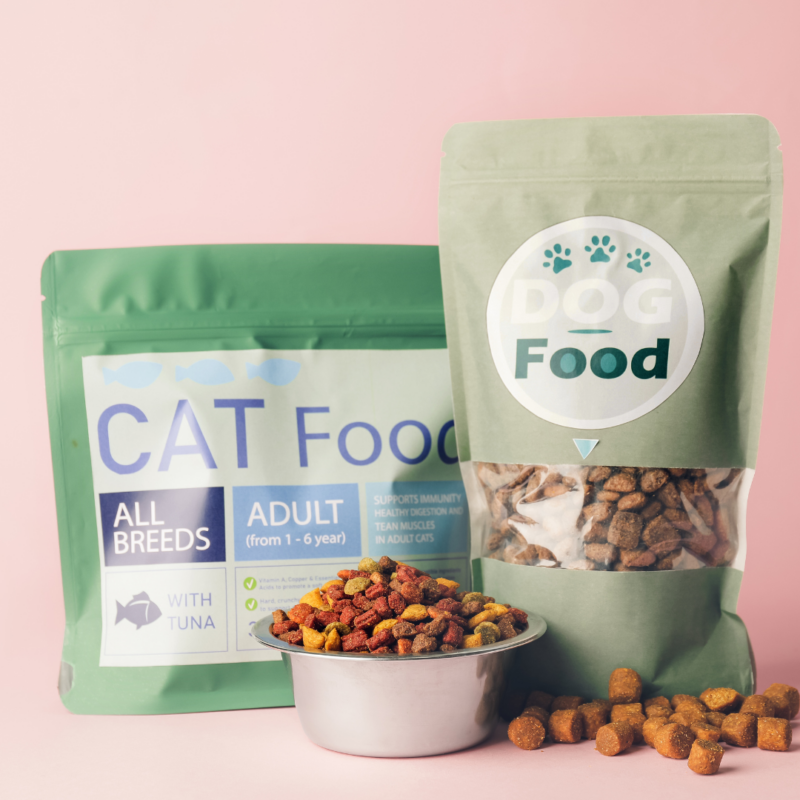Our beloved pets hold a special place in our hearts, and as responsible pet owners, ensuring their well-being becomes a top priority. One crucial aspect of pet care is their diet, and choosing the right pet food plays a significant role in keeping our furry companions healthy and happy. In this blog, we’ll explore the fascinating world of pet food, shedding light on essential considerations, recent trends, and the importance of making informed choices for our four-legged friends.
Understanding Pet Nutrition
Just like humans, pets require a balanced and nutritious diet to thrive. Each pet species—whether dogs, cats, birds, or exotic pets—has specific dietary needs that vary based on factors such as age, size, breed, and health conditions. Essential nutrients like protein, carbohydrates, fats, vitamins, and minerals are crucial for their overall well-being, supporting their growth, energy levels, and immune system.

Types of Pet Food
- Dry Kibble:
- Convenience meets nutrition with dry kibble, a popular choice for its long shelf life and affordability.
- Most brands offer formulas tailored to different life stages, breeds, and health requirements.
- Canned Food:
- Canned pet food often boasts higher moisture content, making it an excellent choice for pets who may need extra hydration.
- The variety in flavors and textures adds an element of palatability, appealing to even the pickiest eaters.
- Raw and Freeze-Dried:
- Advocates of a more natural diet for pets often turn to raw or freeze-dried options, claiming benefits such as improved coat health and digestion.
- However, it’s essential to handle raw food carefully to minimize the risk of foodborne illnesses for both pets and their owners.
- Specialized Diets:
- Some pets have specific dietary requirements due to health issues, allergies, or sensitivities. Specialized diets cater to these needs, providing targeted solutions for optimal health.
Trends in Pet Food
- Holistic and Natural Ingredients:
- Pet owners are increasingly seeking pet foods with high-quality, natural ingredients, and minimal additives or fillers.
- The trend towards holistic nutrition reflects a desire to provide pets with diets that closely mimic what they would consume in the wild.
- Personalization:
- Customized pet food plans, often based on factors like age, weight, and breed, are gaining popularity. This tailoring ensures that each pet receives the specific nutrients it requires.
- Sustainable and Ethical Practices:
- Pet owners are becoming more conscious of the environmental impact of pet food production. Brands focusing on sustainable sourcing, eco-friendly packaging, and ethical practices are gaining traction.
- Functional Ingredients:
- Functional ingredients such as probiotics, omega-3 fatty acids, and antioxidants are being incorporated into pet foods to promote digestive health, joint function, and overall vitality.
Making Informed Choices
- Consulting Veterinarians:
- Regular veterinary check-ups are essential to monitor your pet’s health and dietary needs. Veterinarians can offer valuable insights and recommend suitable diets based on your pet’s specific requirements.
- Reading Labels:
- Understanding pet food labels is crucial for making informed decisions. Look for recognizable and high-quality ingredients, and be wary of excessive fillers or artificial additives.
- Transitioning Gradually:
- When changing your pet’s diet, it’s important to do so gradually to avoid digestive upset. Mix the new food with the old over several days to allow your pet’s system to adjust.











